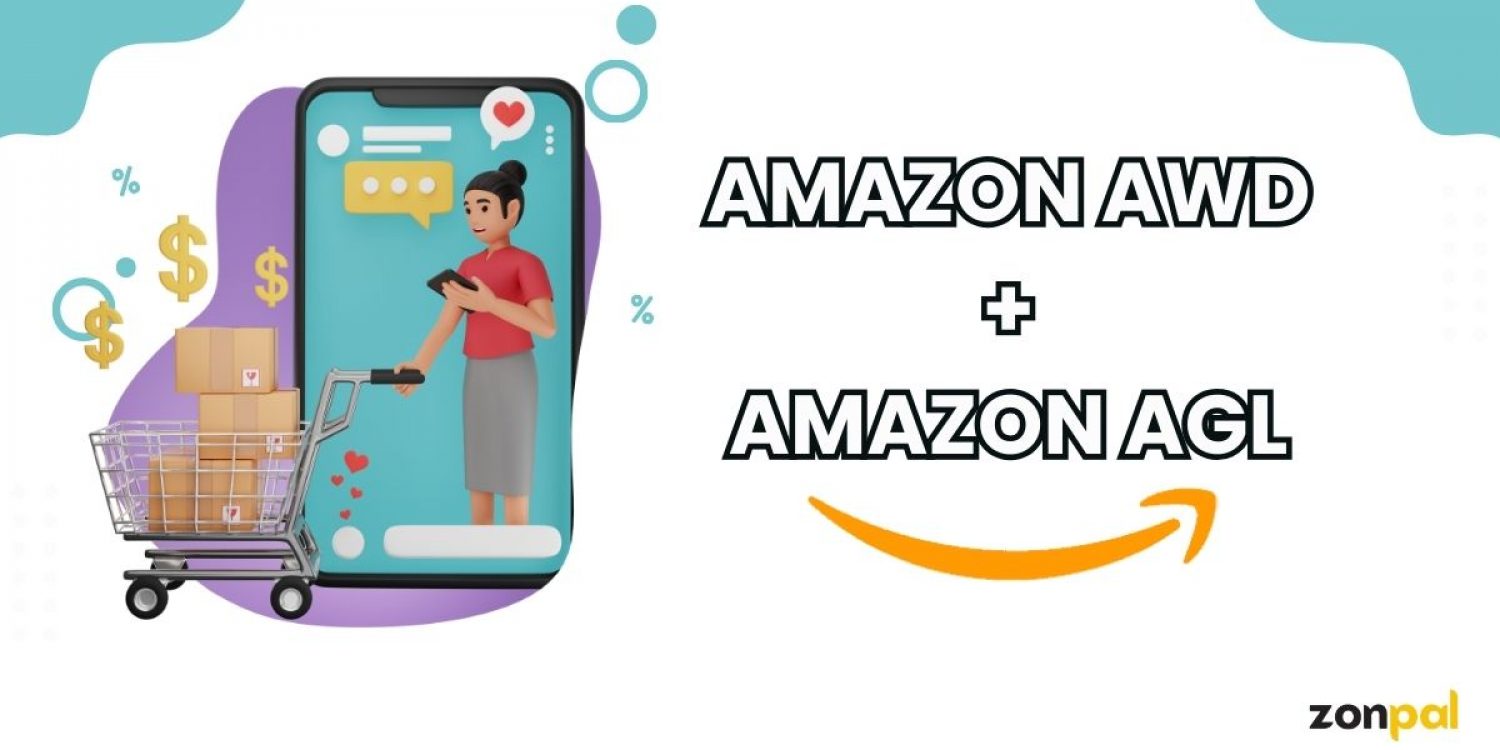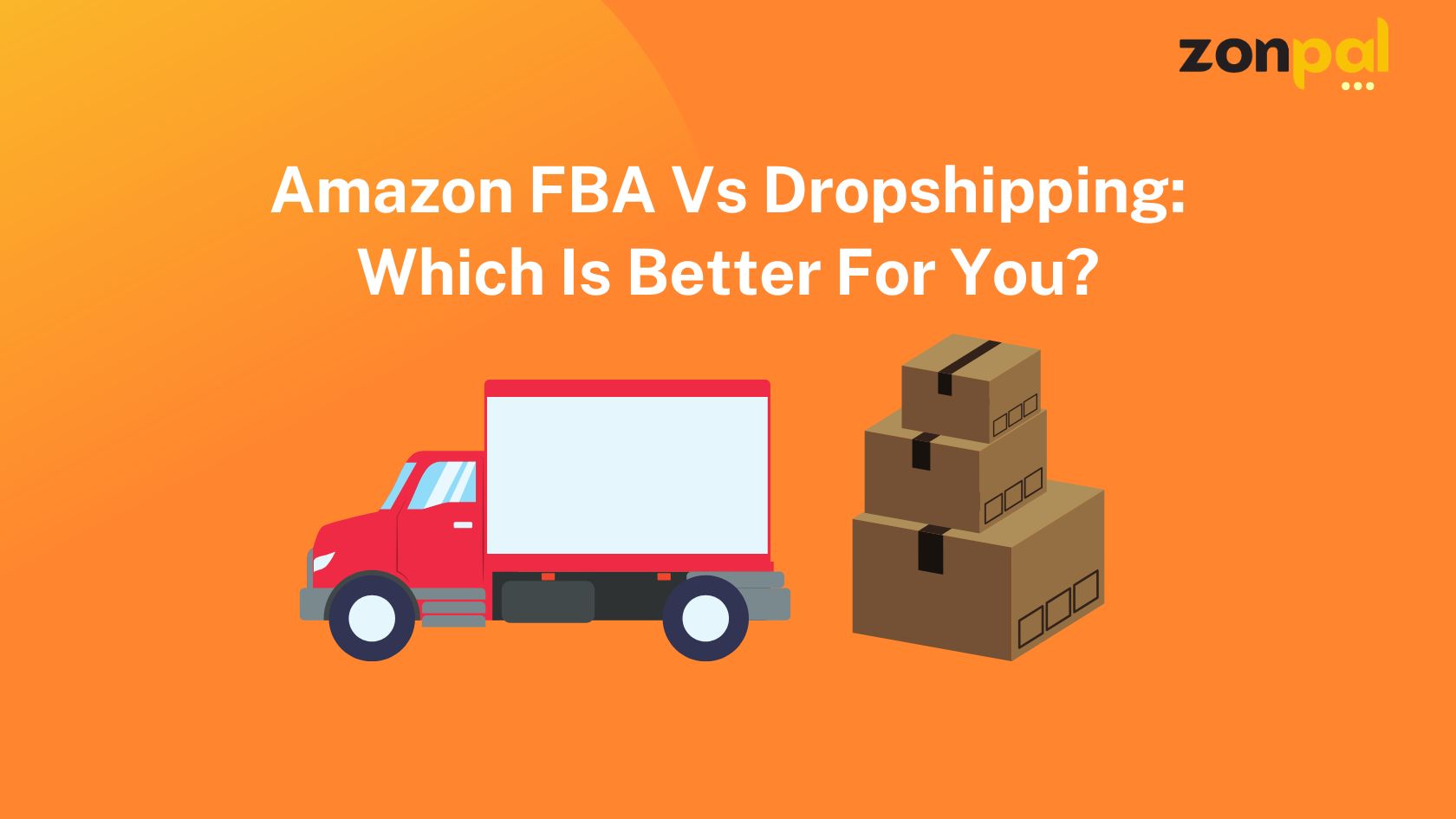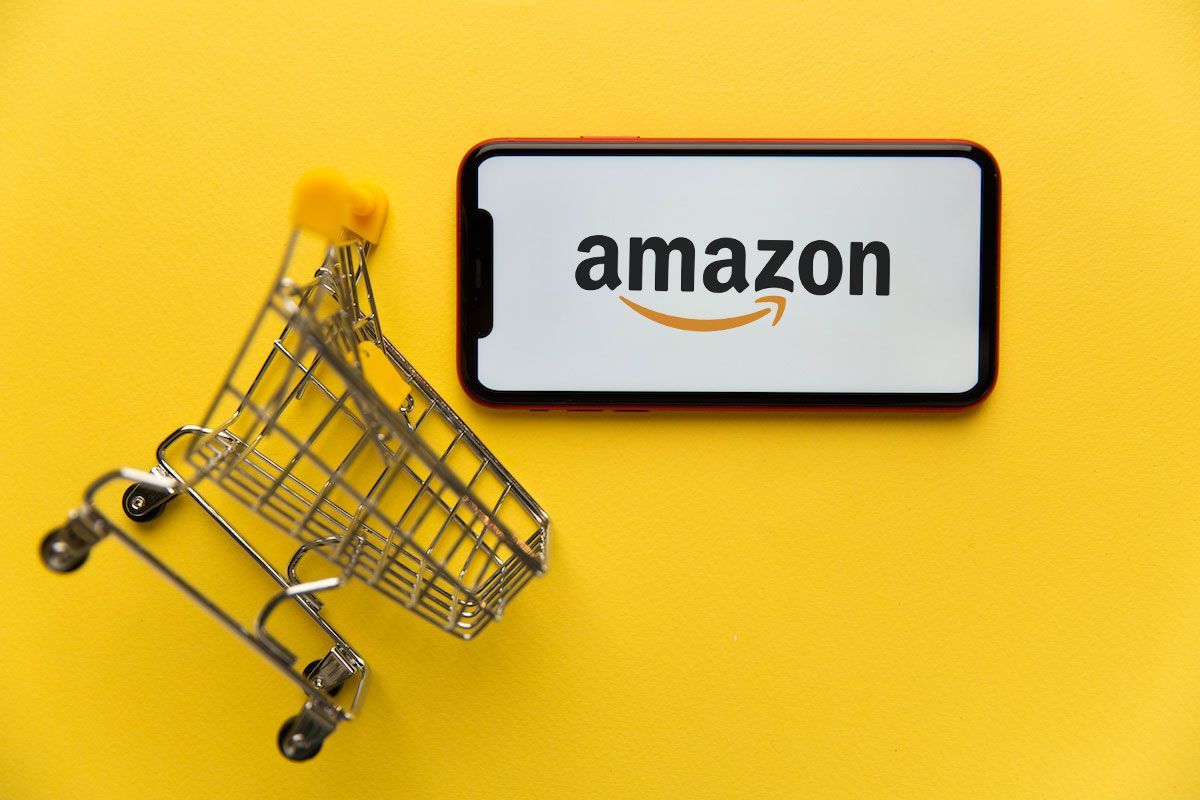Amazon AWD vs AGL: Pros, Cons, and How Sellers Can Benefit
Amazon’s logistics ecosystem has evolved significantly, offering sellers programs like Amazon Warehousing and Distribution (AWD) and Amazon Global Logistics (AGL) to streamline operations. These services cater to sellers looking to optimize their supply chain, reduce costs, and scale efficiently. We’ve seen firsthand how these programs can transform businesses but are not without challenges.
This article looks closely at Amazon AWD vs AGL. It explores their advantages, disadvantages, and how they help sellers. Whether you are new to Amazon FBA or an experienced seller, we will explain the basics. We will share useful tips and give you clear steps to use these services well.
What is Amazon AWD?
Amazon Warehousing and Distribution (AWD) is a bulk storage and distribution service designed to complement Fulfillment by Amazon (FBA). Unlike FBA’s focus on rapid order fulfillment, Amazon warehouse and distribution enables sellers to store large quantities of inventory in Amazon’s warehouses at lower costs, with automated replenishment to FBA centers or other sales channels like Shopify or Walmart. This section unpacks AWD’s role in optimizing inventory management for scaling businesses.
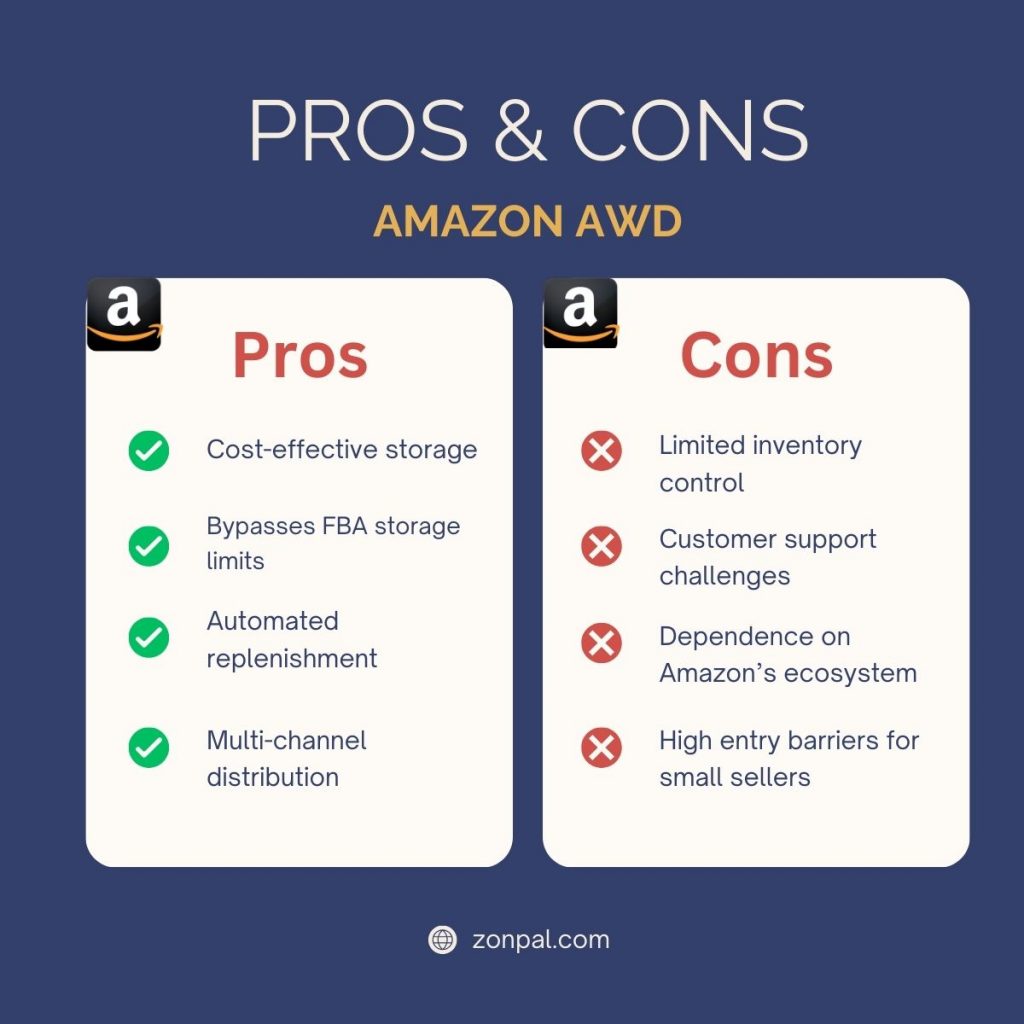
Pros & Cons of Amazon AWD
Pros
- Cost-effective storage: AWD offers storage fees up to 80% lower than FBA’s, particularly from January to September.
- Bypasses FBA storage limits: AWD eliminates Inventory Performance Index (IPI) restrictions allowing sellers to stockpile inventory without worrying about FBA’s capacity constraints.
- Automated replenishment: AWD monitors FBA stock levels and automatically sends inventory to fulfillment centers, reducing stockouts. We’ve seen this feature boost sales consistency during peak seasons like Q4.
- Multi-channel distribution: AWD supports Multi-Channel Fulfillment (MCF), enabling seamless inventory distribution to non-Amazon platforms, and streamlining operations for diversified sellers.
Cons
- Limited inventory control: Sellers relinquish control over inventory placement and distribution, as Amazon manages the AWD facilities. This can lead to inefficiencies if Amazon’s priorities don’t align with your business needs.
- Customer support challenges: Resolving issues like lost inventory or shipment delays can be slow, with Amazon’s support often providing generic responses.
- Dependence on Amazon’s ecosystem: Policy changes or technical issues can disrupt operations, leaving sellers vulnerable with limited alternatives.
- High entry barriers for small sellers: Minimum shipment requirements and upfront costs make AWD hard for them. Low-volume sellers may not find cost savings.
What is Amazon AGL?
Amazon Global Logistics (AGL) is Amazon’s freight forwarding service, simplifying international shipping for FBA sellers. It manages the end-to-end process of pickup from suppliers (typically in China or Hong Kong), customs clearance, and delivery to AWD or FBA facilities—offering a seamless solution for cross-border logistics. This section explores AGL’s role in global supply chain management.
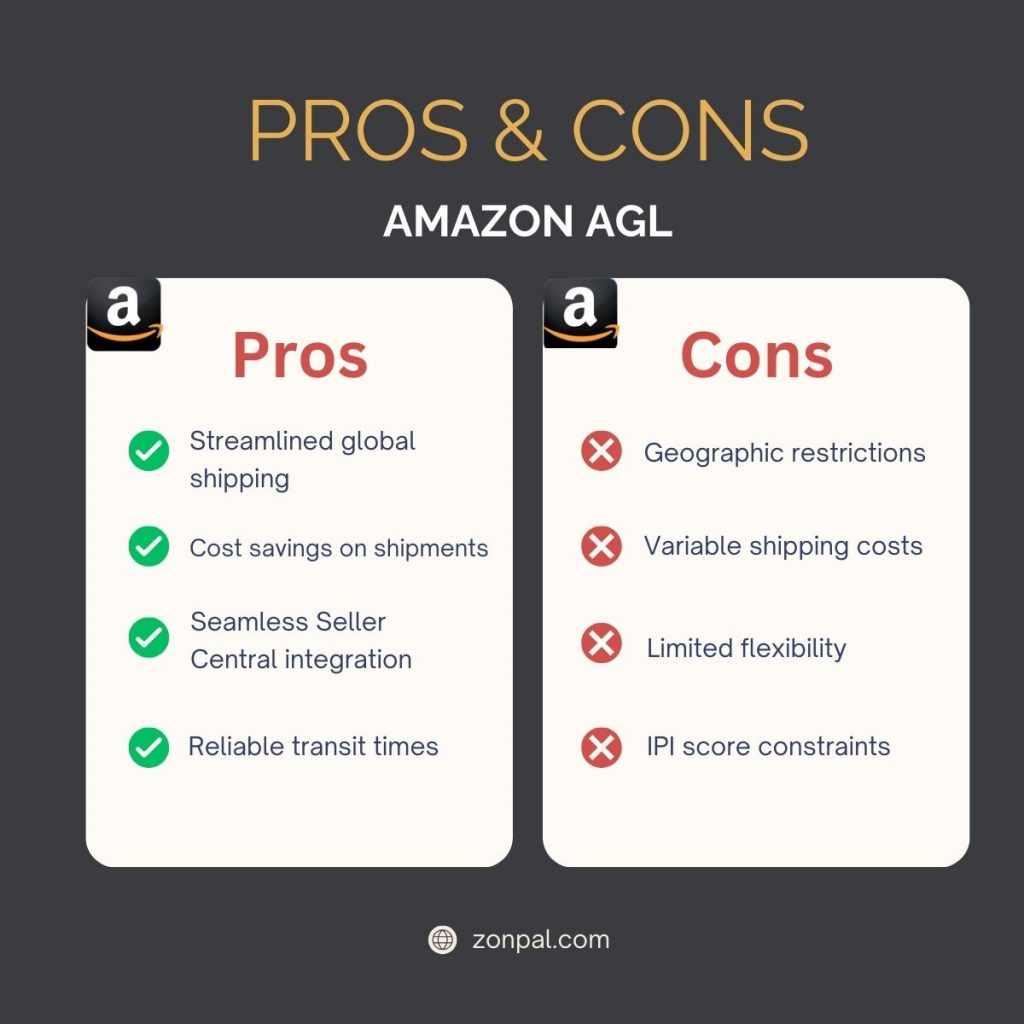
Pros & Cons of Amazon AGL
Pros
- Streamlined global shipping: AGL handles pickup, customs, and delivery to reduce reliance on third-party logistics providers. Its all-inclusive pricing eliminates hidden fees like customs surcharges.
- Cost savings on shipments: AGL offers up to 25% discounts on cross-border shipments to AWD, making it cost-competitive for high-volume imports.
- Seamless Seller Central integration: Sellers can book, pay, and track shipments within Seller Central, saving time compared to coordinating with multiple 3PL providers.
- Reliable transit times: Backed by Amazon’s logistics network, AGL’s Fast Ocean Freight option reduces shipping time, critical for time-sensitive inventory like seasonal goods.
Cons
- Geographic restrictions: AGL primarily supports Amazon shipping from China and Hong Kong, limiting its utility for sellers sourcing from other regions like Europe or India.
- Variable shipping costs: Fees depend on shipment volume and product tariffs, which can erode savings for high-tariff goods like electronics.
- Limited flexibility: Unlike 3PL providers, AGL doesn’t offer Delivered Duty Paid (DDP) services, which some sellers prefer for complex shipments.
- IPI score constraints: Sellers with an IPI below 400 may face storage restrictions, as Amazon prioritizes high-performing sellers. This impacts AGL’s usability.
Amazon AWD vs AGL: A Powerful Combo for Smarter Logistics
The synergy between AWD and AGL creates a robust, end-to-end logistics solution for FBA sellers. By combining AGL’s international shipping with AWD’s bulk storage, sellers can optimize costs and efficiency. We’ll show the workflow and key features of this powerful integration below.
Workflow
The AWD-AGL process streamlines inventory management below:
Step 1: AGL picks up inventory from suppliers
AGL coordinates directly with your supplier—typically in manufacturing hubs like China or Hong Kong to pick up inventory. It handles all customs documentation, including import duties and compliance with local regulations. For example, a Zonpal client importing kitchen gadgets from Shenzhen used AGL to complete customs clearance in just 36 hours, compared to 5–7 days with a traditional 3PL provider. This step eliminates the need for sellers to navigate complex international shipping regulations themselves, saving time and reducing errors.
Step 2: Inventory arrives at AWD facilities for bulk storage:
Once cleared through customs, AGL delivers the inventory straight to Amazon’s AWD warehouses. Here, they store it at much lower rates than FBA, up to 80% less during non-peak months. These facilities optimize for long-term, high-volume storage, making them ideal for seasonal or oversized products.
Step 3: AWD auto-replenishes FBA or distributes to non-Amazon channels
AWD’s automated system monitors FBA inventory levels and replenishes stock as needed, ensuring products remain available for Amazon sales without overstocking.
Additionally, AWD’s Multi-Channel Fulfillment (MCF) feature allows sellers to distribute inventory to non-Amazon platforms like Shopify, Walmart, or eBay. Fishers Finery, a premium fashion brand, increased its non-Amazon channel revenue by 988% over 10 years by using Amazon MCF as its primary logistics partner.
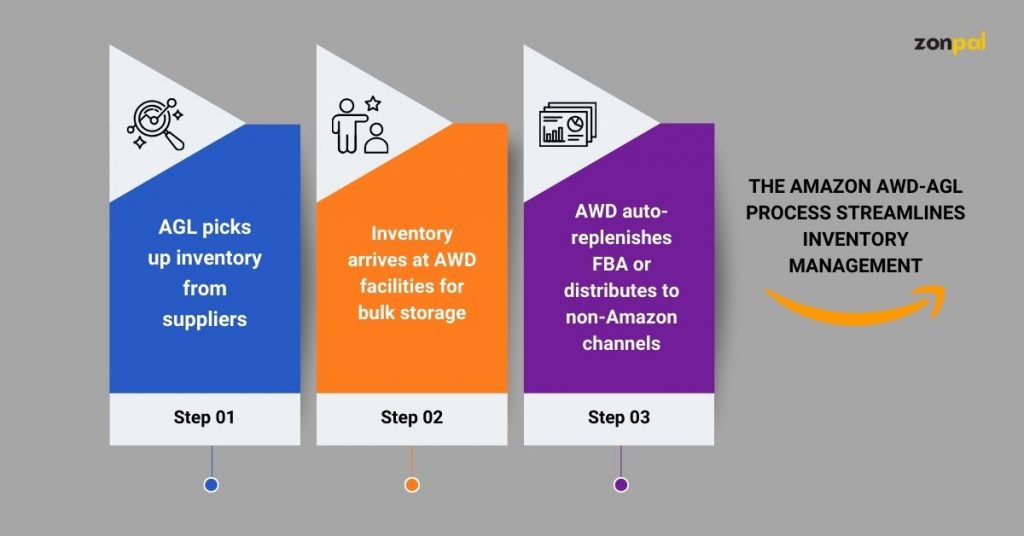
The AWD-AGL process streamlines inventory management
Key Features
- Discounted rates: Using AGL to ship to AWD unlocks 25% off storage fees and 15% off processing and shipping costs, significantly boosting margins for high-volume sellers.
- Auto-replenishment efficiency: AWD’s automation prevents FBA stockouts by monitoring and replenishing inventory in real-time. You can reduce stockout-related sales losses by up to 15% during peak seasons.
- Multi-channel support: AWD’s MCF integration enables seamless distribution to non-Amazon platforms, simplifying logistics for diversified sellers.
>>> See more: Amazon FBA vs 3PLs: Pros, Cons, and Which to Choose in 2025 <<<
Who Should Choose Amazon AWD vs AGL?
Choosing between Amazon AWD and AGL depends on your business size. It also depends on your inventory needs and sourcing plan. You can use them together if that works for you.
To help you decide, we’ve broken down the ideal use cases for each service, drawing on real-world scenarios and our experience at Zonpal. Whether you’re managing high-volume stock or importing from overseas, understanding these programs’ strengths will guide you to the right choice.
- Amazon AWD: Ideal for High-Volume or Seasonal Sellers
AWD shines for sellers with large inventory volumes or seasonal products that don’t need immediate fulfillment. Its low-cost storage (up to 80% cheaper than FBA) and ability to bypass FBA’s IPI restrictions make it perfect for stockpiling inventory without breaking the bank.
A seller of large items, like patio furniture, can keep extra stock in AWD during slow months. This helps avoid high FBA fees. A seller of seasonal items, like Halloween costumes, can use AWD to keep inventory all year. They can restock FBA just before busy times.
AWD’s Multi-Channel Fulfillment (MCF) also makes it a strong fit for sellers expanding to Shopify, Walmart, or eBay, as it simplifies cross-platform logistics. However, small sellers with low sales (like under 100 units per month) might find that AWD’s minimum shipping size and setup costs are too high to be worth it.
- Amazon AGL: Perfect for Frequent Importers from China or Hong Kong
AGL is a game-changer for sellers who often import goods from China or Hong Kong. It provides a simpler option than traditional 3PL providers. Its all-in-one service handles pickup, customs clearance, and delivery to AWD or FBA. This makes it easy to avoid the hassle of working with many logistics partners.
For example, importing electronics from Guangzhou saved around 20% on shipping costs. It also cut transit time by 3 days with AGL’s Fast Ocean Freight compared to a 3PL provider. AGL’s connection with Seller Central makes booking and tracking easier. This is great for sellers who prefer efficiency over flexibility.
However, AGL is less suitable for sellers sourcing from regions outside China or Hong Kong, such as Europe or India, due to its geographic limitations. Additionally, sellers with infrequent shipments (fewer than 4 per year) may find AGL’s Continuous Bond costs and fees uneconomical compared to 3PL options.
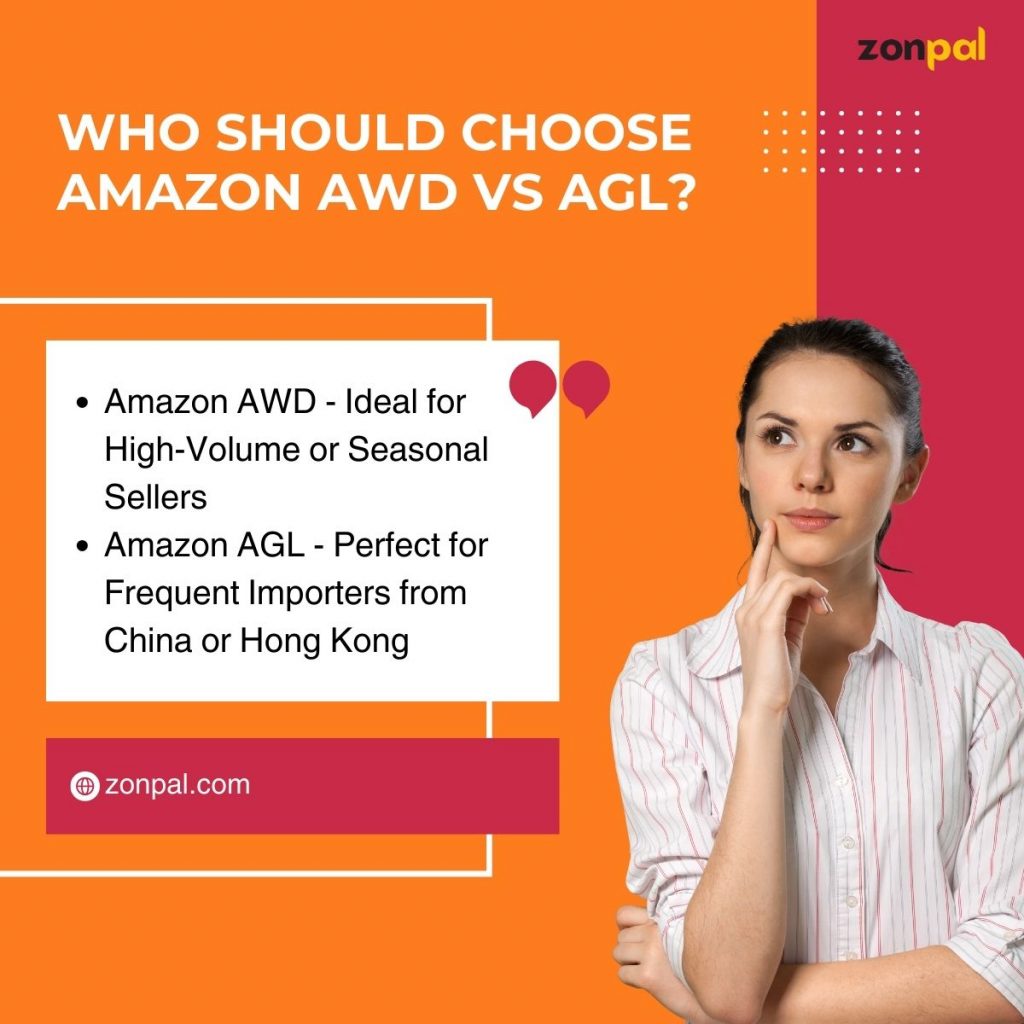
Who Should Choose Amazon AWD vs AGL?
- Combining AWD and AGL: The Ultimate Scaling Strategy
Combining AWD and AGL offers unmatched efficiency for sellers with complex, high-volume supply chains. AGL streamlines international shipping, delivering inventory directly to AWD’s low-cost storage, which then auto-replenishes FBA or distributes to other platforms.
At Zonpal, we recommend this approach for established sellers with at least $50,000 in monthly revenue and regular imports. The combination unlocks discounts (25% off AWD storage, 15% off processing/shipping) and ensures a steady inventory flow, minimizing stockouts and maximizing sales. However, new sellers or those with low margins should carefully assess costs, as the upfront investment and Amazon dependency may pose risks.
In short, if your business focuses on domestic sales with high inventory needs, AWD alone can optimize storage and distribution. AGL is the better choice if you’re importing frequently from China and want a hassle-free logistics solution.
How to Get Started with Amazon AWD vs Amazon AGL?
Ready to streamline your logistics with Amazon AWD or AGL? This section offers simple, step-by-step instructions to help sellers set up these services quickly and optimize their supply chain with ease.
Getting Started with Amazon AWD
- Step 1: Sign in Seller Central
Log into your Seller Central account or sign up one if you’re new. For the best experience, choose a Professional selling account to unlock AWD’s full range of features and tools.
- Step 2: Check Product Eligibility
Confirm your products meet AWD’s criteria by reviewing the guidelines in Seller Central. Typically, eligible items are standard-size, non-hazardous, and not in restricted categories like food or jewelry.
- Step 3: Create and Ship Inventory
Go to Growth > Explore Programs > Warehousing and Distribution in Seller Central. To start a shipment, choose SKUs or upload an inventory file.
Make sure each box has only 1 SKU and Amazon’s A4-sized SSCC labels. Pick a shipping option like AGL, Amazon Partnered Carrier, or your own carrier. Use the AWD dashboard to track shipments, manage inventory, and check FBA replenishments.
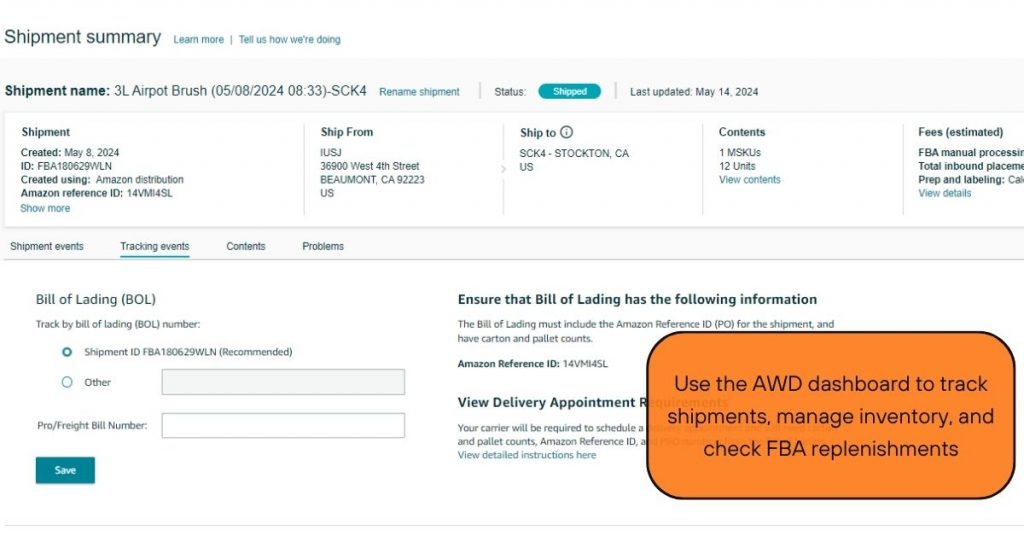
Use the AWD dashboard to track shipments
Getting Started with Amazon AGL
- Step 1: Activate Your AGL Account
Sign into Seller Central and create your Amazon Global Logistics account. If you’re already an FBA seller, you can jump right in to start using AGL for international shipping.
- Step 2: Finish Onboarding
Set up your payment method, provide Importer of Record (IOR) details, and upload necessary documents (like commercial invoices or packing lists) in Seller Central to complete the AGL setup process.

Set up your payment method
- Step 3: Schedule and Track Shipments
In Seller Central, go to Inventory > Send/Replenish Inventory to book a shipment from your supplier’s location (e.g., China) to an Amazon fulfillment center or AWD facility. Monitor the shipment’s status in real time using Seller Central’s tracking tools.
Conclusion
Amazon AWD and AGL offer powerful solutions for FBA sellers, streamlining logistics and cutting costs. AWD’s low-cost storage and auto-replenishment shine for high-volume or multi-channel sellers, while AGL simplifies international shipping from China or Hong Kong.
However, challenges like limited control and geographic restrictions require strategic planning. At Zonpal, we recommend evaluating your inventory volume, sourcing needs, and sales channels to choose the right fit. Start small, monitor performance, and adjust as your business grows to maximize profitability. If you’re unsure which path to take, reach out to Zonpal’s Consulting & Strategies service for personalized guidance to navigate your e-commerce journey with confidence.

